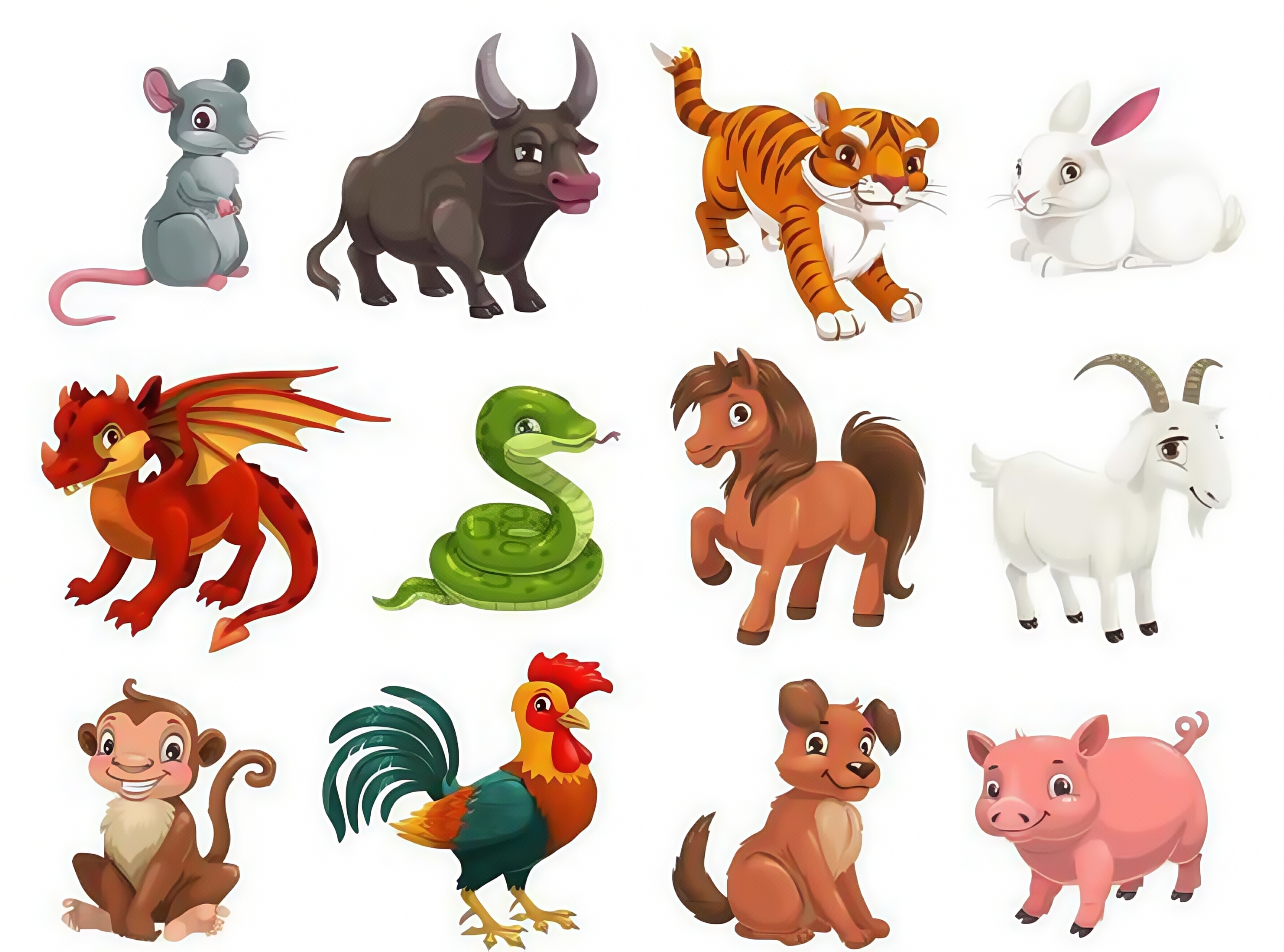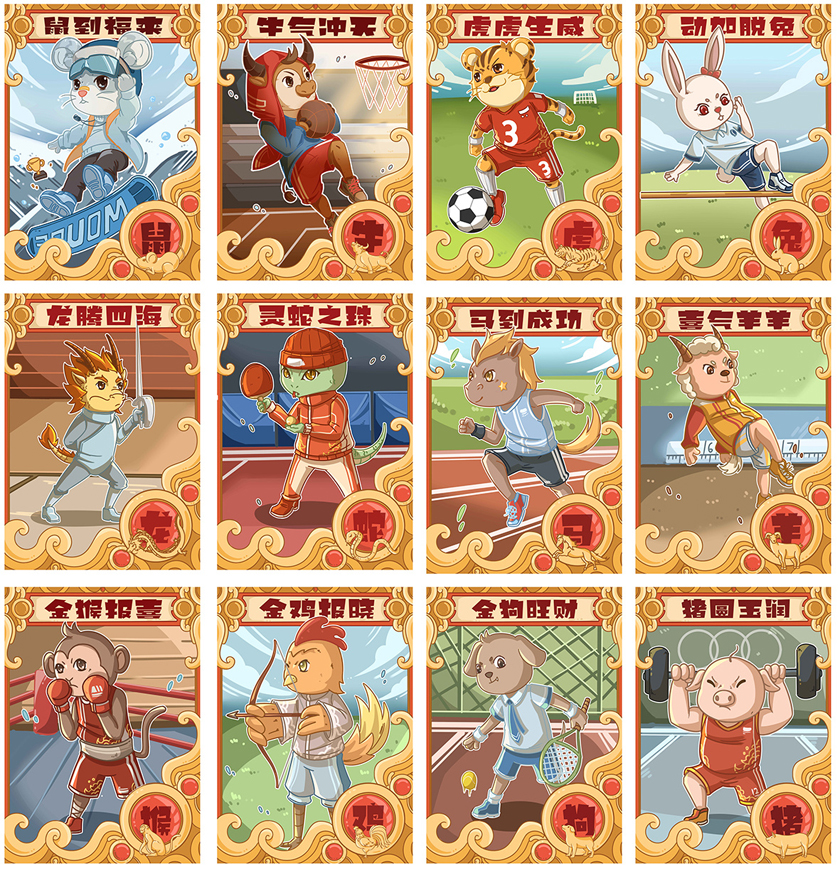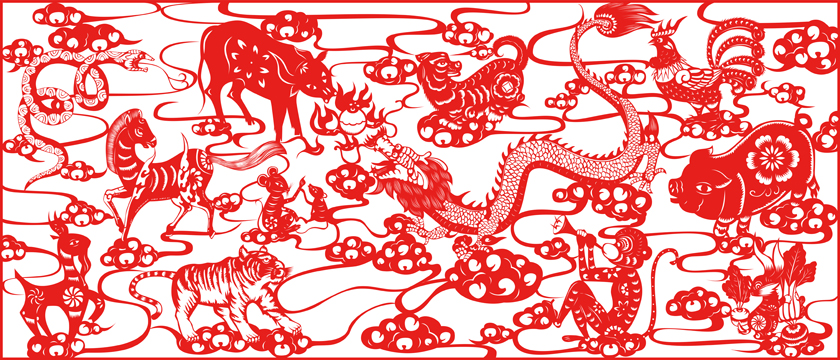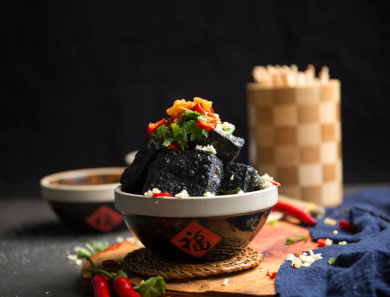Ancient Chinese Zodiac: What Chinese Animal Am I?
The Chinese Zodiac (生肖, Shēngxiào) is one of the most captivating aspects of Chinese culture, offering insights into personality traits and destiny based on your birth year. But which animal represents you?
What is the Chinese Zodiac?
The Chinese Zodiac (Shēngxiào), also known as the Twelve Animal Signs (Shǔxiàng), is a traditional Chinese system that assigns twelve animals to people based on their birth year. These animals correspond to the Twelve Earthly Branches (Dìzhī).
The twelve animals are:
• Rat (Shǔ)
• Ox (Niú)
• Tiger (Hǔ)
• Rabbit (Tù)
• Dragon (Lóng)
• Snake (Shé)
• Horse (Mǎ)
• Sheep (Yáng)
• Monkey (Hóu)
• Rooster (Jī)
• Dog (Gǒu)
• Pig (Zhū)
The correspondence with the Twelve Earthly Branches:
• Zǐ (子) - Rat
• Chǒu (丑) - Ox
• Yín (寅) - Tiger
• Mǎo (卯) - Rabbit
• Chén (辰) - Dragon
• Sì (巳) - Snake
• Wǔ (午) - Horse
• Wèi (未) - Sheep
• Shēn (申) - Monkey
• Yǒu (酉) - Rooster
• Xū (戌) - Dog
• Hài (亥) - Pig
Note: The Chinese characters and their pinyin pronunciations are included for cultural reference.
How to Find Your Chinese Zodiac Animal?
Your zodiac animal depends on the year you were born. Since the twelve Chinese zodiac signs operate on a 12-year cycle, each year corresponds to a different animal.
Here are the years corresponding to the twelve Chinese zodiac signs in the recent 100 years (from 1924 to 2024):
Rat:
1924, 1936, 1948, 1960, 1972, 1984, 1996, 2008, 2020.
Ox:
1925, 1937, 1949, 1961, 1973, 1985, 1997, 2009, 2021.
Tiger:
1926, 1938, 1950, 1962, 1974, 1986, 1998, 2010, 2022.
Rabbit:
1927, 1939, 1951, 1963, 1975, 1987, 1999, 2011, 2023.
Dragon:
1928, 1940, 1952, 1964, 1976, 1988, 2000, 2012, 2024.
Snake:
1929, 1941, 1953, 1965, 1977, 1989, 2001, 2013, 2025.
Horse:
1930, 1942, 1954, 1966, 1978, 1990, 2002, 2014, 2026.
Sheep:
1931, 1943, 1955, 1967, 1979, 1991, 2003, 2015, 2027.
Monkey:
1932, 1944, 1956, 1968, 1980, 1992, 2004, 2016, 2028.
Rooster:
1933, 1945, 1957, 1969, 1981, 1993, 2005, 2017, 2029.
Dog:
1934, 1946, 1958, 1970, 1982, 1994, 2006, 2018, 2030.
Pig:
1935, 1947, 1959, 1971, 1983, 1995, 2007, 2019, 2031.
Once you determine your birth year within this cycle, you can easily find your corresponding animal.

Memorable Rhymes for Chinese Zodiac Years
Here are some simple and easy-to-remember rhymes to help you quickly grasp and memorize the Chinese Zodiac year patterns:
Traditional Sequence Method:
"Rat, Ox, Tiger, Rabbit,
Dragon, Snake, Horse, and Sheep,
Monkey, Rooster, Dog, and Pig."
This rhyme follows the fixed order of the twelve zodiac animals. First memorize the sequence, then match it with the Gregorian calendar years. When calculating, mentally recite the order to easily identify corresponding years. For example, to find Dragon years, count to "Chen" (Dragon's position) and match it with modern Dragon years.
Year Span Method:
"1960 starts with Rat,
Twelve years make one complete cycle;
2008 is also Rat,
Easy to count forward from there."
This highlights that 1960 is a Rat year, and the zodiac cycle repeats every 12 years. With a clear starting point, you can calculate nearby years by adding or subtracting multiples of 12. For example, to determine 2032's zodiac sign: 2032 - 1960 = 72, since 72 is divisible by 12, 2032 is also a Rat year.
Tips for Calculation:
• Remember 1960 (Rat year) as anchor point
• Count in 12-year cycles
• Add or subtract 12 years
• Match with modern years
Note: The Chinese zodiac system is based on 12-year cycles, making it easy to calculate once you know a reference year.
Personality Traits of the Chinese Zodiac Signs
RAT
• Quick-witted, dexterous, and agile but somewhat timid
• Highly adaptable and sociable
• Slightly introverted yet energetic in actions
• Observant, cautious, logical thinker but may miss opportunities
OX
• Down-to-earth, hardworking, ambitious but inflexible
• Honest, responsible, and patient
• Strong sense of justice, stands up for others
• Frugal, stable, but can be moody
TIGER
• Strong presence, natural leader, energetic and ambitious
• Bold and innovative
• Generous, confident, but sometimes stubborn
• Just and helpful
RABBIT
• Gentle, kind, optimistic, and sensitive
• Easy-going, clever, and considerate
• Elegant demeanor, refined thinking
• Patient, non-confrontational, sometimes taken advantage of
DRAGON
• Mysterious, determined, natural leader, ambitious
• Focused, decisive, but occasionally lazy
• Filial, generous, good with finances
• Intelligent, talented, dignified
SNAKE
• Focused, responsible, somewhat suspicious and complex
• Skillful, quick-minded
• Energetic, easy-going
• Composed exterior, sometimes brutally honest
HORSE
• Energetic, gentle nature, but decisive in action
• Independent, strong-tempered, straightforward
• Eloquent, direct, persistent
SHEEP
• Good learner, research-oriented, creative
• Kind, tolerant, compliant but not blindly following
• Patient, peaceful, adaptable
MONKEY
• Ambitious, competitive, resilient
• Multi-talented, versatile
• Slightly vain, free-spirited
• Sociable, good at networking
ROOSTER
• Energetic, articulate, bold, unpredictable
• Efficiency-focused
• Decisive, sharp, likes to show off
• Determined, competitive
DOG
• Determined, reliable, loyal to leaders but practical
• Just, fair, agile
• Intelligent and insightful
• Obedient, hardworking, pragmatic
PIG
• Very kind, face-saving, sincere, sympathetic
• Energetic, honest with others
• Generally good fortune with money
• Trusting, easily deceived, optimistic
Note: These traits are traditional interpretations and may vary by individual.

Complementary Personality Traits of Chinese Zodiac Pairs
The first group: Rat and Ox.
The rat represents wisdom and the ox represents diligence. If there is only wisdom but not diligence, it becomes petty cleverness. If there is only diligence but no thinking, it becomes stupidity. So the two can be combined.
The second group: Tiger and Rabbit.
The tiger represents bravery and the rabbit represents caution. The two must be closely combined to achieve what is called boldness and meticulousness. If bravery leaves caution, it becomes recklessness. And blind caution becomes timidity.
The third group: Dragon and Snake.
The dragon represents firmness and the snake represents flexibility. As the saying goes, what is too firm is easily broken. What is too flexible is easily weak. So the combination of firmness and flexibility is the ancestral precept of all generations.
The fourth group: Horse and Sheep.
The horse represents going forward without hesitation and striving for the goal. The sheep represents unity and harmony. Only with collective harmony can we free up our hands to pursue our respective ideals. If a person only cares about his own interests and does not pay attention to unity and harmony, he will inevitably be left alone. Therefore, personal striving and collective harmony must be closely combined.
The fifth group: Monkey and Rooster.
The monkey represents flexibility. The rooster crows regularly and represents constancy. The very harmonious combination between flexibility and constancy. On the one hand, it has stability and maintains the overall harmony and order. On the other hand, it can continuously move forward with flexibility.
The sixth group: Dog and Pig.
The dog represents loyalty and the pig represents amiability. If a person is too loyal and does not know how to be amiable, he will reject others. Conversely, if a person is too amiable and has no loyalty, this person will lose his principles.
Note:These combinations reflect traditional Chinese philosophy of balance and complementary traits.
Chinese Zodiac Animals and Their Corresponding Lunar Months
1st Month (Yín Month):
• Tiger Month
• Marks the end of winter and approaching spring
• Traditional timing: Late January/February
2nd Month (Mǎo Month):
• Rabbit Month
• Warm spring breeze, nature awakens
• Traditional timing: February/March
3rd Month (Chén Month):
• Dragon Month
• Characterized by fog and thunder
• Traditional timing: March/April
4th Month (Sì Month):
• Snake Month
• Weather warms up, snakes become active
• Traditional timing: April/May
5th Month (Wǔ Month):
• Horse Month
• Grass grows, birds sing, horses neigh in joy
• Traditional timing: May/June
6th Month (Wèi Month):
• Sheep/Goat Month
• Lush vegetation, sheep graze in meadows
• Traditional timing: June/July
7th Month (Shēn Month):
• Monkey Month
• Trees flourish, monkeys are active
• Traditional timing: July/August
8th Month (Yǒu Month):
• Rooster Month
• Mid-autumn festival, traditional chicken feasts
• Traditional timing: August/September
9th Month (Xū Month):
• Dog Month
• Harvest season, dogs guard crops
• Traditional timing: September/October
10th Month (Hài Month):
• Pig Month
• Weather cools, pigs are fattened
• Traditional timing: October/November
11th Month (Zǐ Month):
• Rat Month
• First snow, beginning of winter
• Traditional timing: November/December
12th Month (Chǒu Month):
• Ox Month
• Coldest weather, oxen rest in barns
• Traditional timing: December/January
Note: These months follow the lunar calendar, with each month reflecting natural phenomena and animal activities specific to that time of year.
























